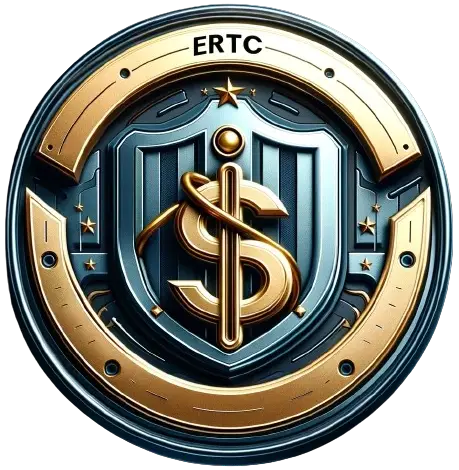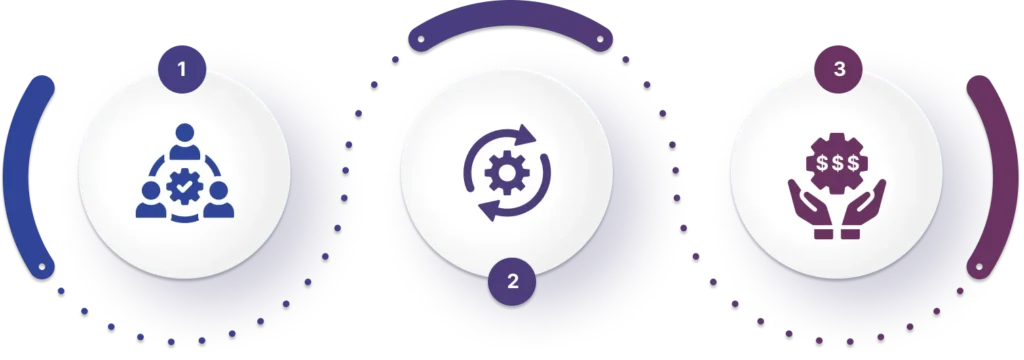Key Takeaways
- The deadline to claim the Employee Retention Credit (ERTC) for 2021 is April 15, 2025.
- Businesses must meet specific eligibility criteria to claim the ERTC, which includes experiencing a significant decline in gross receipts or being subject to a full or partial suspension due to government orders.
- Accurate documentation and timely submission are crucial for maximizing ERTC benefits.
- The IRS may implement changes in how ERTC claims are processed in 2025, affecting the timing and handling of claims.
- Avoiding common pitfalls is essential to ensure compliance and to prevent delays or audits.
What You Need to Know About the 2025 ERTC Deadline Extension
If you’ve been keeping up with the Employee Retention Credit (ERTC), you’ll know it’s been a lifeline for many businesses during uncertain times. But did you hear? There’s an update you can’t afford to miss: the deadline to claim for 2021 has been extended to April 15, 2025. This gives you more time to gather your documents and make sure you get every penny you’re entitled to. Let’s dive into what this extension means and how you can navigate the changes.
Understanding the Extended Deadline Parameters
First things first, let’s get clear on what the extended deadline entails. Previously, businesses had a shorter window to claim their credit for wages paid in 2021. Now, you’ve got until April 15, 2025, to submit your claim. This is crucial because it means more breathing room to ensure your claim is accurate and complete. But don’t wait until the last minute—getting a head start means you’ll have your credit in hand sooner, which can be a game-changer for your cash flow.
Eligibility Criteria for ERTC Post-Extension
Even with the deadline extension, the rules for who can claim the ERTC haven’t changed. To qualify, you need to have experienced either:
- A significant decline in gross receipts compared to the same quarter in 2019, or
- Been subject to a full or partial suspension of operations due to government orders related to COVID-19.
It’s essential to review these criteria carefully. If you’re not sure whether you qualify, don’t guess—get advice. Making a mistake here could lead to headaches down the line.
Maximizing Your ERTC Benefits Before Time Runs Out
With the extended deadline, there’s more time to ensure you’re maximizing your benefits. This means claiming the credit for all eligible wages and health plan expenses. Remember, this is a refundable credit, so it can result in a cash refund if it exceeds the taxes you owe.
Streamlining Documentation for ERTC Claims
Documentation is the name of the game when it comes to the ERTC. You’ll need to show how your business was impacted by the pandemic, with records of gross receipts and proof of government orders affecting your operations. Here’s a quick checklist of what to gather:
- Quarterly financial statements showing gross receipts for 2019 and the corresponding quarters in 2020 or 2021,
- Copies of government orders that led to a full or partial suspension of your business,
- Payroll records detailing the wages and health plan expenses you’re claiming.
Getting your documentation in order can be tedious, but it’s non-negotiable for a successful claim.
Strategies for Efficient ERTC Application Submission
When it comes to submitting your ERTC claim, efficiency is key. The best approach is to file an amended payroll tax return using IRS Form 941-X. Here’s how to do it right:
- Double-check your figures to ensure you’re claiming the correct amount.
- Fill out Form 941-X carefully, following the instructions to the letter.
- Attach all necessary documentation to support your claim.
- Consider seeking professional help if you’re unsure about any part of the process.
Doing this correctly can mean a smoother process and quicker access to your funds.
How the IRS Will Handle Your ERTC Claims
Looking ahead to 2025, it’s important to understand that the IRS may change how they process ERTC claims. With the increased volume of claims due to the extension, the IRS will likely be scrutinizing submissions more closely to prevent fraud and errors. Therefore, it’s crucial to submit claims that are accurate and fully documented. If you’ve dotted your i’s and crossed your t’s, you can expect a smoother review process.
What These Changes Mean for Your Business’s Cash Flow
For your business, this extension could be a lifeline or a pitfall. If you manage to claim the ERTC correctly, it can provide significant financial relief and positively impact your cash flow. However, if you fail to comply with the requirements or miss the deadline, you could be leaving money on the table or, worse, facing penalties. So, take this extension seriously and use the extra time wisely to ensure your business benefits from this opportunity.
Common Pitfalls to Avoid With ERTC Claim
There are several traps you might fall into when claiming the ERTC. First, not understanding the eligibility criteria can lead to either missed opportunities or the submission of an ineligible claim. Second, incorrect calculation of qualified wages or health expenses can either reduce your credit or result in an overclaim, which could trigger an audit. Finally, sloppy record-keeping can make it impossible to substantiate your claim if the IRS asks for proof.
To avoid these pitfalls, educate yourself on the ERTC’s rules, carefully calculate your claim, and maintain meticulous records. It’s better to take the time to get your claim right than to rush and make a mistake.
And remember, the IRS is stepping up its efforts to catch erroneous claims. They’re using increasingly sophisticated tools to spot anomalies, so any attempt to game the system is likely to backfire. Play it straight, and you’ll have nothing to worry about.
Avoiding Errors That Could Delay Your Credit
To prevent delays in receiving your ERTC, double-check your work before submitting. Make sure every figure on your Form 941-X is correct and that you’ve attached all the necessary documentation. If the IRS finds errors, they’ll send your claim back for corrections, which can significantly delay your credit. A little extra attention to detail now can save you a lot of time later.
Ensuring Compliance and Avoiding Audits
Audit risk is real, but it’s manageable. To ensure compliance and minimize the chance of an audit, follow these steps:
- Understand the ERTC rules thoroughly or consult with a tax professional who does.
- Keep detailed records of all relevant financial transactions and decisions related to COVID-19.
- Be honest and accurate in your reporting. Don’t claim more than you’re entitled to, and don’t leave out anything you should include.
By sticking to these principles, you’ll not only avoid trouble but also build a strong case for your claim.
Preparing for the Post-ERTC Business Landscape
Eventually, the ERTC will end, and businesses will need to adjust to a landscape without this support. Now is the time to start preparing for that transition. Begin by assessing your financial health without the ERTC and look for other areas where you can optimize your tax situation or reduce expenses.
Financial Planning Without ERTC Assistance
As the ERTC winds down, it’s vital to integrate its absence into your financial planning. Start by revisiting your budget and forecasts, removing the ERTC as a line item. Consider how you’ll manage cash flow and whether there are other tax credits or deductions you can leverage to soften the blow. The goal is to create a sustainable financial plan that doesn’t rely on temporary measures like the ERTC.
Transitioning to Alternative Tax Credits and Incentives
Thankfully, the ERTC isn’t the only game in town. There are numerous other tax credits and incentives available to businesses. Research options such as the Work Opportunity Tax Credit (WOTC) or research and development (R&D) tax credits, which can provide ongoing benefits. Also, stay informed about new incentives that may be introduced as part of future economic stimulus measures.
By staying proactive and informed, you can navigate the end of the ERTC and continue to find financial advantages for your business.
FAQ
Before we wrap up, let’s address some frequently asked questions that might be on your mind:
- What is the last date to file for the ERTC claim for 2021?
- Can my business still qualify for ERTC if we received PPP loans?
- What are the documentation requirements for ERTC claims post-extension?
- What should I do if I missed the ERTC deadline?
- How does the 2025 ERTC extension affect businesses with fluctuating revenues?
Answers to these questions can give you a clearer picture of how to proceed with your ERTC claim and ensure you’re making the most of this opportunity.
What is the last date to file for the ERTC claim for 2021?
The last date to file for the ERTC claim for 2021 is April 15, 2025. This extension provides extra time for businesses to gather necessary documentation and ensure their claims are accurate. Make sure to mark this date on your calendar and start preparing your claim well in advance to avoid any last-minute rush.
FAQ
As we conclude, you might have some lingering questions about the ERTC and the 2025 deadline extension. It’s important to have these queries addressed to confidently navigate the process and ensure your business capitalizes on this opportunity.
Here are some of the most common questions and their answers to help you stay informed and prepared:
What is the last date to file for the ERTC claim for 2021?
The final date to submit your ERTC claim for the 2021 tax year is April 15, 2025. It’s crucial to have this date etched in your mind because missing it means missing out on potential financial benefits for your business. Start preparing now to avoid the rush and to ensure you have all the necessary documentation ready for a smooth filing process.
Can my business still qualify for ERTC if we received PPP loans?
Yes, your business can still qualify for the ERTC even if you’ve received Paycheck Protection Program (PPP) loans. However, there’s a catch: you cannot claim the ERTC for the same wages that were covered by the forgiven portion of your PPP loan. It’s a bit of a balancing act, but with careful planning, you can take advantage of both programs.
What are the documentation requirements for ERTC claims post-extension?
Post-extension, the documentation requirements for ERTC claims remain the same. You’ll need to provide:
- Detailed payroll records to substantiate the wages and health plan expenses you’re claiming,
- Proof of a significant decline in gross receipts or government orders that fully or partially suspended your operations,
- Any other relevant financial statements or documents that support your eligibility for the credit.
Keep these documents organized and accessible to streamline the claim process.
What should I do if I missed the ERTC deadline?
If you’ve missed the ERTC deadline, it’s essential to act swiftly. While you may not be able to claim the credit for past periods, you should immediately consult with a tax professional to explore your options. They might help you identify other tax credits or incentives for which your business is eligible. Remember, the ERTC is just one of many tools available to support your business financially.
How does the 2025 ERTC extension affect businesses with fluctuating revenues?
The 2025 ERTC extension can be particularly beneficial for businesses with fluctuating revenues. If your business has experienced ups and downs, you may still qualify for the credit based on the periods when your gross receipts saw a significant decline. The extension gives you more time to analyze your financials and claim the credit for the eligible periods, ensuring you don’t miss out due to revenue variability.
Understanding these FAQs and the information provided throughout this article will position you to make the most of the ERTC and the 2025 deadline extension. It’s an opportunity to bolster your business’s financial health during challenging times, and with the right approach, you can navigate through the changes with confidence.
Remember, while the ERTC is a powerful tool, it’s just one part of a broader financial strategy. As you prepare for the post-ERTC landscape, continue to seek out other credits and incentives, optimize your tax situation, and build a robust financial foundation for your business. With careful planning and a proactive mindset, you can transition smoothly and maintain financial stability in the years to come.




